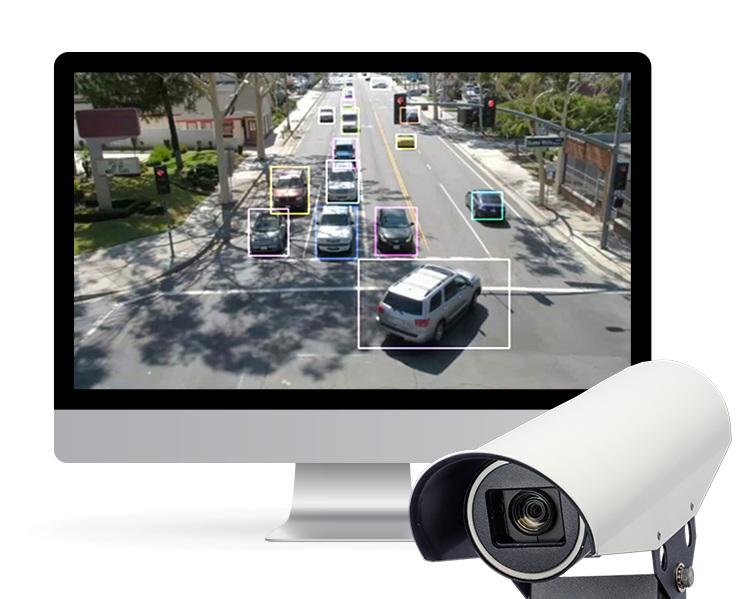The US Department of Transportation (USDOT) has also developed an animated video to illustrate the concept of connected vehicles and help the public understand its potential benefits. Connected vehicle technology enables cars to wirelessly communicate with each other, roadside infrastructure, and even personal mobile devices, sharing valuable information that could save lives, reduce congestion, and lessen the impact of transportation on our environment.
The 324 US Department of Transportation (USDOT) has also developed an animated video to illustrate the concept of connected vehicles and help the public understand its potential benefits.
Connected vehicle technology enables cars to wirelessly communicate with each other, roadside infrastructure, and even personal mobile devices, sharing valuable information that could save lives, reduce congestion, and lessen the impact of transportation on our environment.
The USDOT's new animated video shows connected vehicles in action, moving through several scenarios that highlight the technology's benefits in safety, mobility, environment, road weather, and emergency response.
It illustrates how anonymous data from connected vehicles will be collected and used as the basis for a myriad of applications such as emergency electronic brake light warning, which notifies the driver when an out-of-sight vehicle, several cars ahead, is braking, road weather motorist warning, which issues alerts and advisories to travellers about deteriorating road and weather conditions on specific roadway segments.
Other applications include eco-approach and departure at signalized intersections, to provide information to drivers about traffic signal timing, allowing drivers to adapt their speed so they pass the signal on green or decrease speed to a stop in the most eco-friendly way possible; incident zone warning to alert drivers to incidents ahead, warning them to slow down and change lanes; also, alerts first responders at the scene about approaching vehicles that pose a danger to them; queue warning, which monitors traffic data to detect stretches of slow-moving traffic and warn motorists to reduce speeds to avoid potential rear-end collisions; connection protection, giving passengers real-time transit information so they can more accurately predict whether they will make their next connection. If multiple people on a delayed bus will miss their next connection, transportation providers can adjust bus departures to enable the passengers to make their next connection; and mobile accessible pedestrian signal system, which sends an ‘automated pedestrian call’ from the smart phone of a pedestrian with disabilities to the traffic controller, holding the walk signal until the pedestrian has cleared the crosswalk. Also, alerts drivers of the presence of a pedestrian with disabilities at the crosswalk.
The video is %$Linker:2 External <?xml version="1.0" encoding="utf-16"?><dictionary /> 0 0 0 oLinkExternal available here Click here to view the USDOT Video on Connected vehicles false http://www.its.dot.gov/library/media/15cv_future.htm false false %>.
Connected vehicle technology enables cars to wirelessly communicate with each other, roadside infrastructure, and even personal mobile devices, sharing valuable information that could save lives, reduce congestion, and lessen the impact of transportation on our environment.
The USDOT's new animated video shows connected vehicles in action, moving through several scenarios that highlight the technology's benefits in safety, mobility, environment, road weather, and emergency response.
It illustrates how anonymous data from connected vehicles will be collected and used as the basis for a myriad of applications such as emergency electronic brake light warning, which notifies the driver when an out-of-sight vehicle, several cars ahead, is braking, road weather motorist warning, which issues alerts and advisories to travellers about deteriorating road and weather conditions on specific roadway segments.
Other applications include eco-approach and departure at signalized intersections, to provide information to drivers about traffic signal timing, allowing drivers to adapt their speed so they pass the signal on green or decrease speed to a stop in the most eco-friendly way possible; incident zone warning to alert drivers to incidents ahead, warning them to slow down and change lanes; also, alerts first responders at the scene about approaching vehicles that pose a danger to them; queue warning, which monitors traffic data to detect stretches of slow-moving traffic and warn motorists to reduce speeds to avoid potential rear-end collisions; connection protection, giving passengers real-time transit information so they can more accurately predict whether they will make their next connection. If multiple people on a delayed bus will miss their next connection, transportation providers can adjust bus departures to enable the passengers to make their next connection; and mobile accessible pedestrian signal system, which sends an ‘automated pedestrian call’ from the smart phone of a pedestrian with disabilities to the traffic controller, holding the walk signal until the pedestrian has cleared the crosswalk. Also, alerts drivers of the presence of a pedestrian with disabilities at the crosswalk.
The video is %$Linker:






